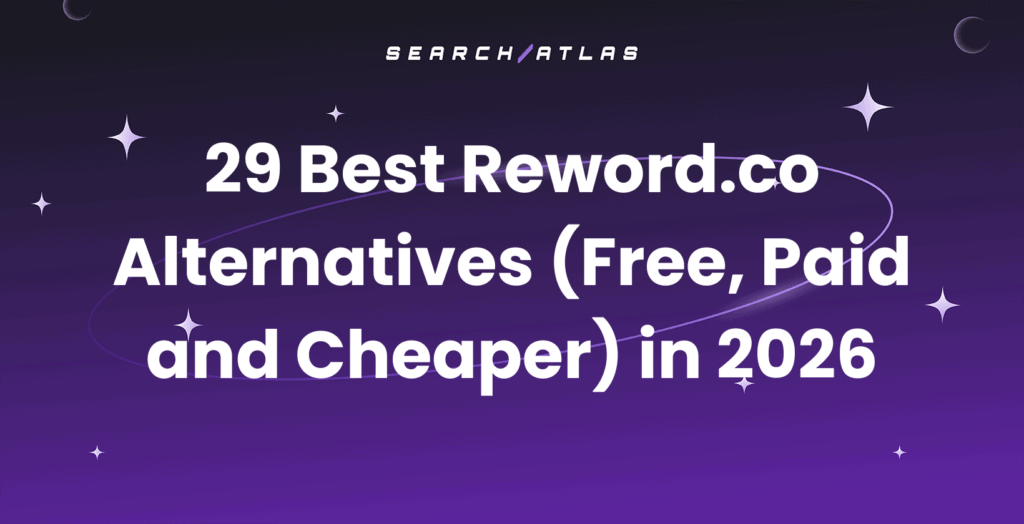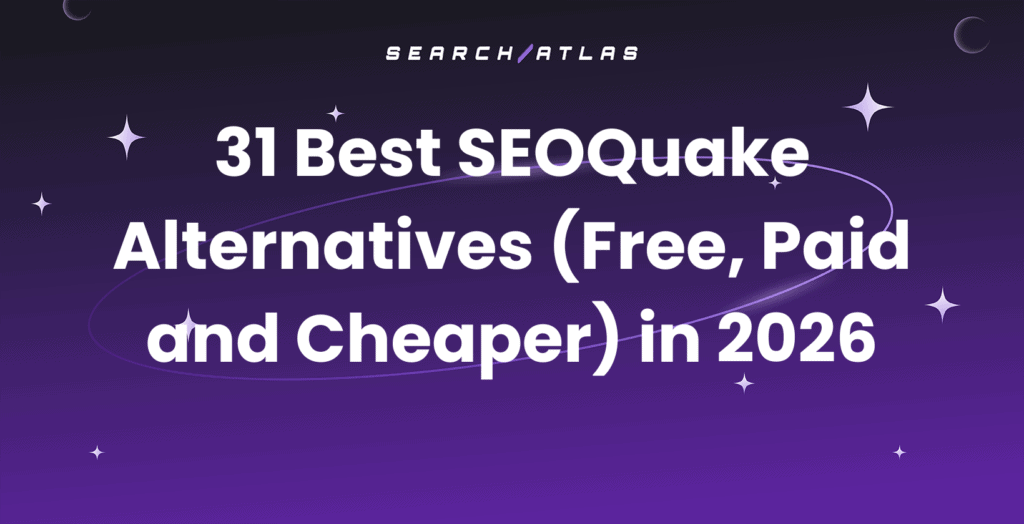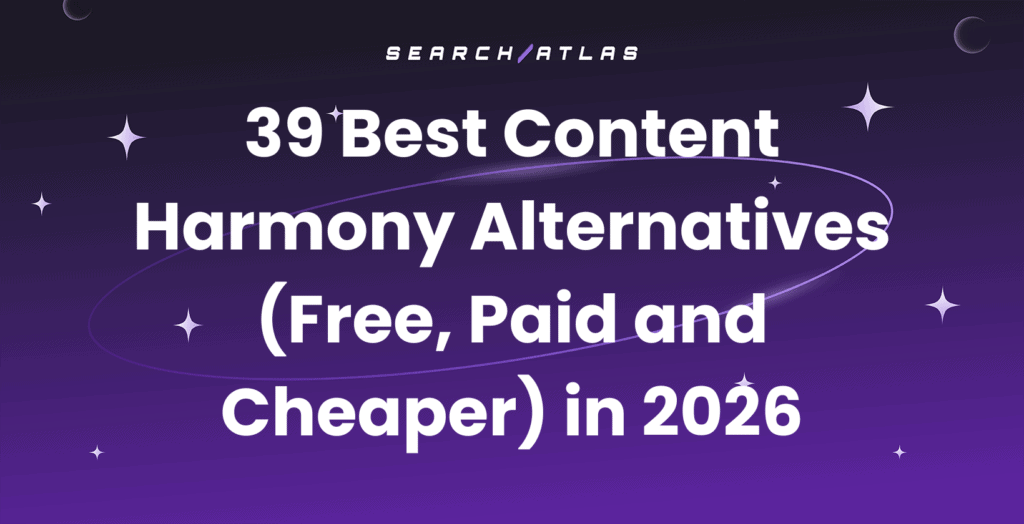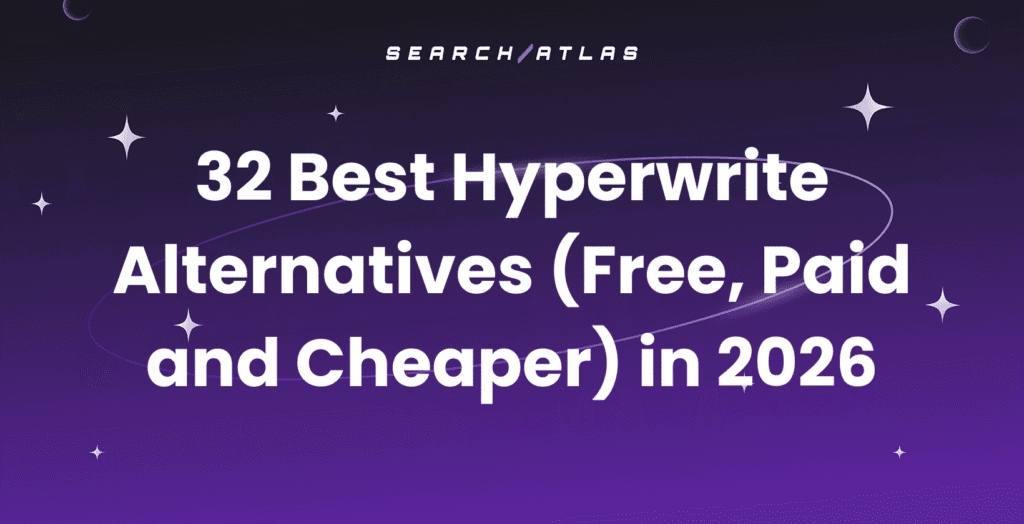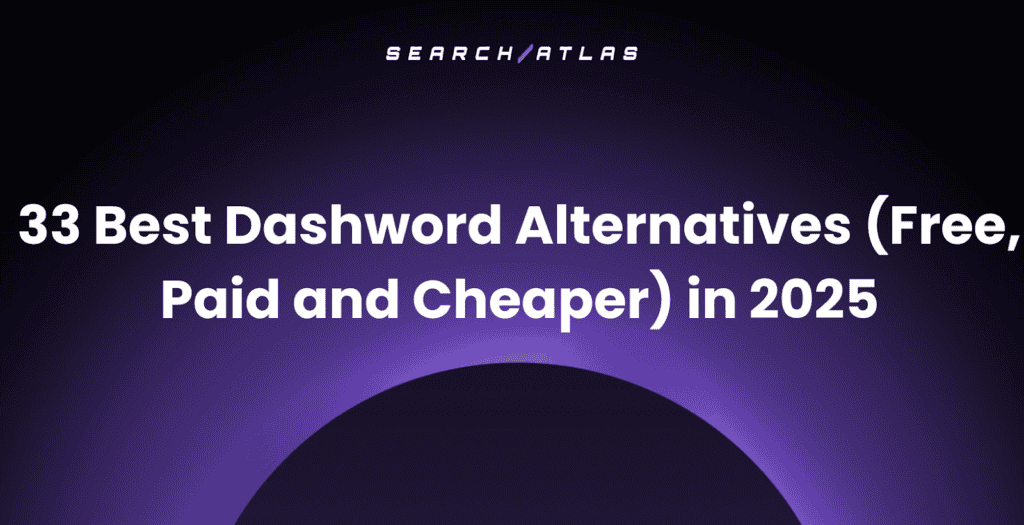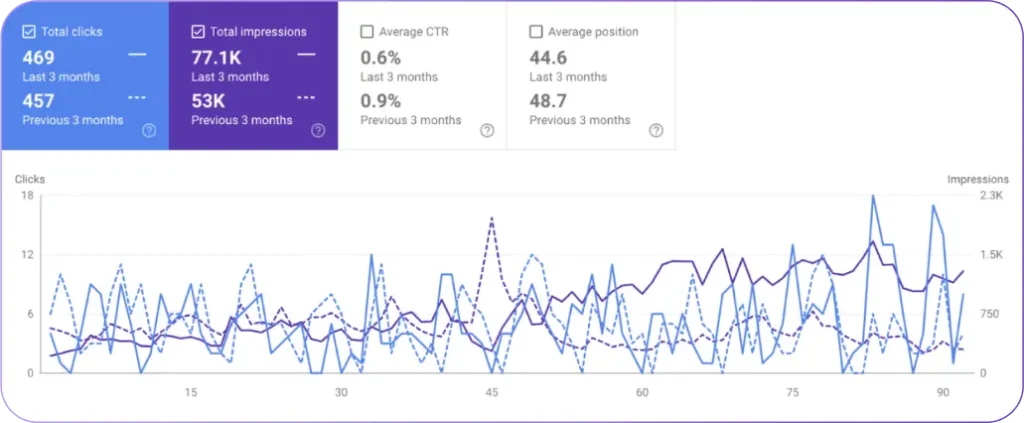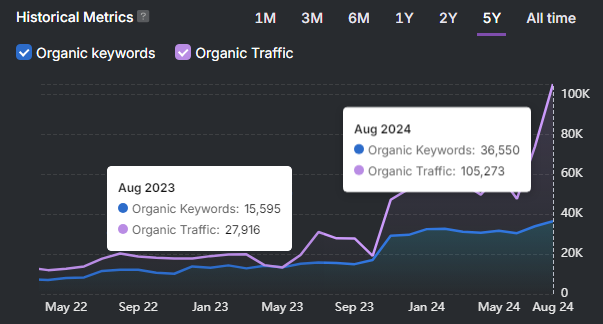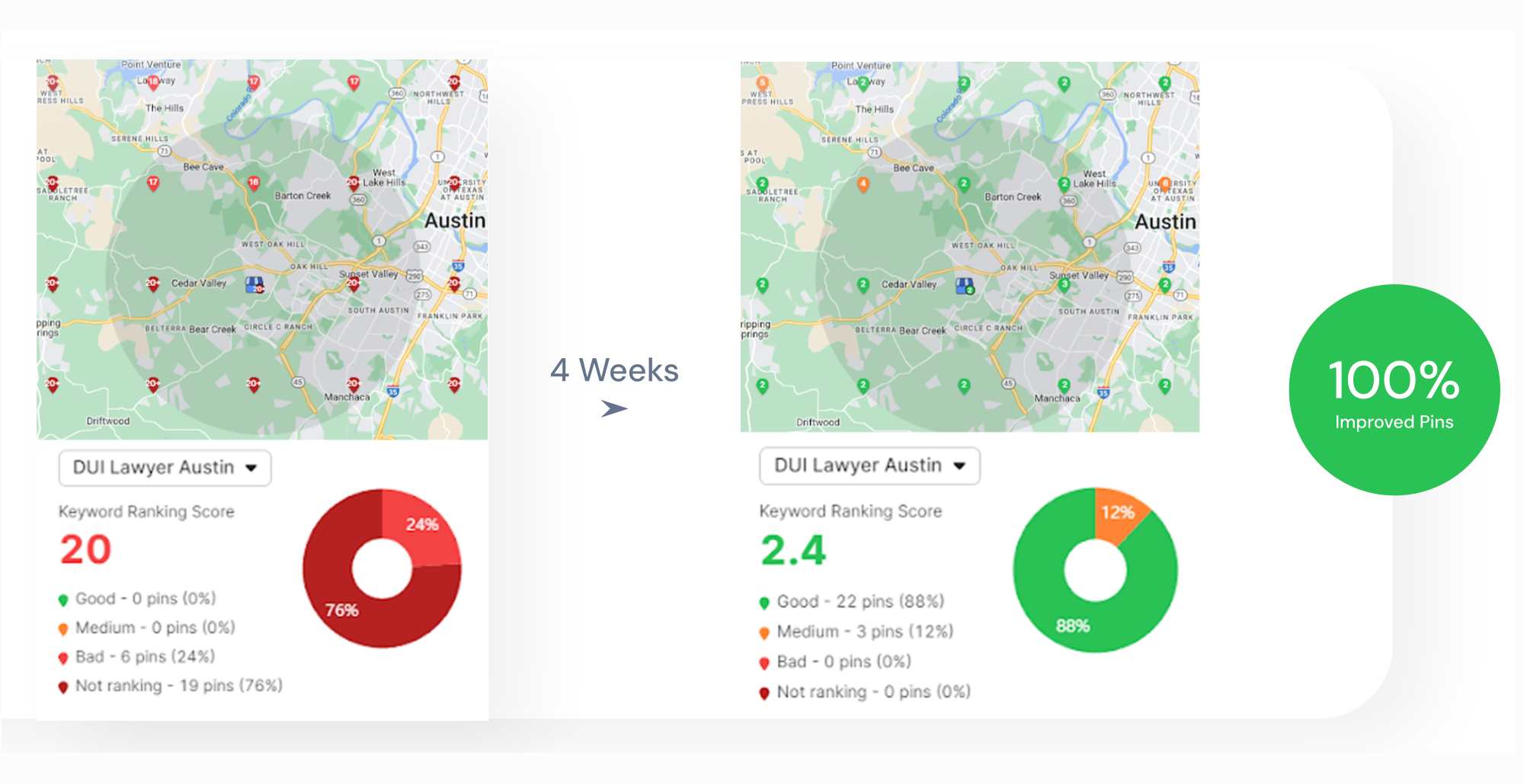Search Atlas addresses what Brightlocal doesn’t: automation and AI-driven execution for local SEO strategies. While Brightlocal excels at auditing, monitoring, and reporting, Search Atlas goes further by actively managing and optimizing campaigns.
Its AI-powered GBP Galactic suite automates tasks like generating and posting responses to reviews, creating GBP Posts, and managing online reputation. It also integrates local rank tracking, GBP management, and direct data aggregator submissions into a single streamlined platform.
This guide walks you through transitioning your local SEO workflows to Search Atlas. You’ll set up local keyword tracking, use the GBP Galactic suite for automation, build citations, and create white-label client reports.
1. Migrating Your Local Keyword & Grid Tracking
The first step is to move your keyword tracking data from Brightlocal into the Search Atlas Local SEO Heatmap.
Brightlocal uses two separate tools for this: the Local Rank Tracker for keyword lists and the Local Search Grid for map-based visibility. You will want to export your data from both.
From Brightlocal
Exporting from the Local Rank Tracker (for your keyword list). This tool tracks your rankings for a list of keywords in a specific location.
Log in to your Brightlocal account. If you have an existing location, go to All Locations.
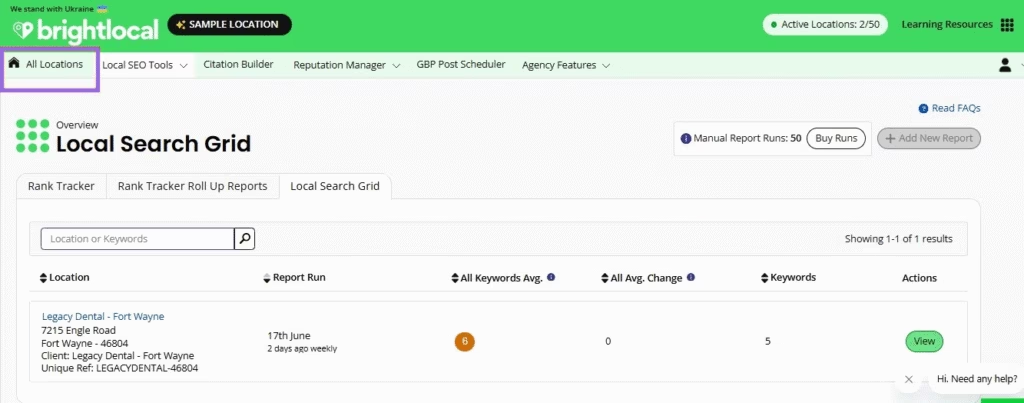
Click View on your business.
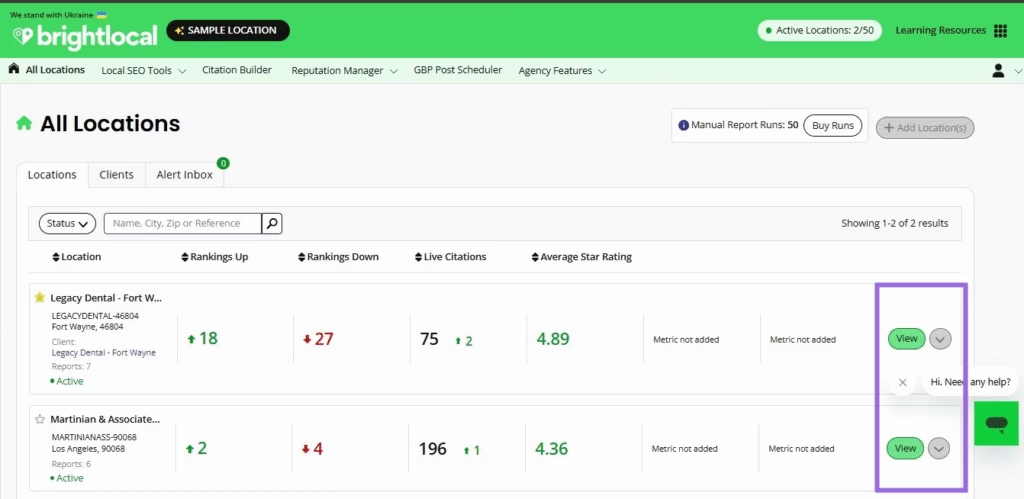
Choose Rankings > Rank Tracker from the sidebar.
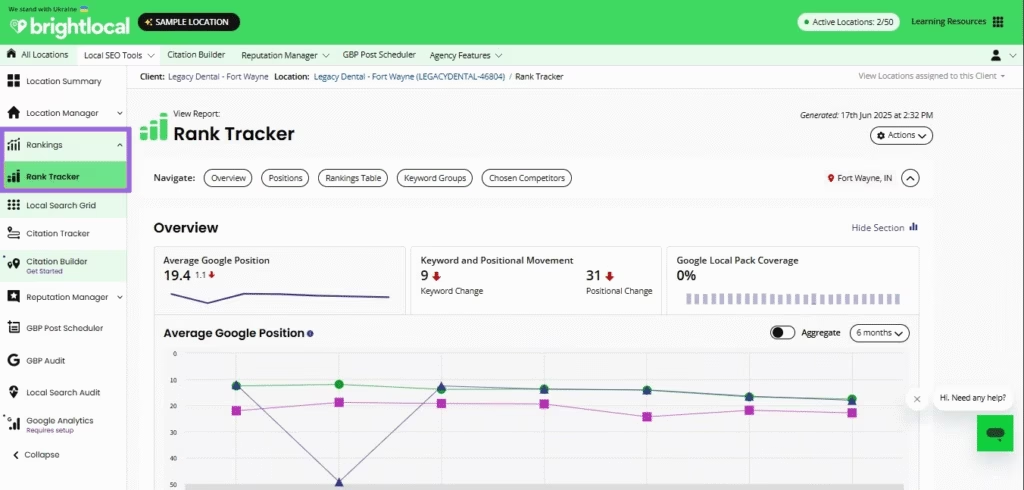
Click the Actions dropdown at the top-right corner of the report.
Select Download CSV to export your keyword data. Alternatively, choose Download PDF for a formatted report.
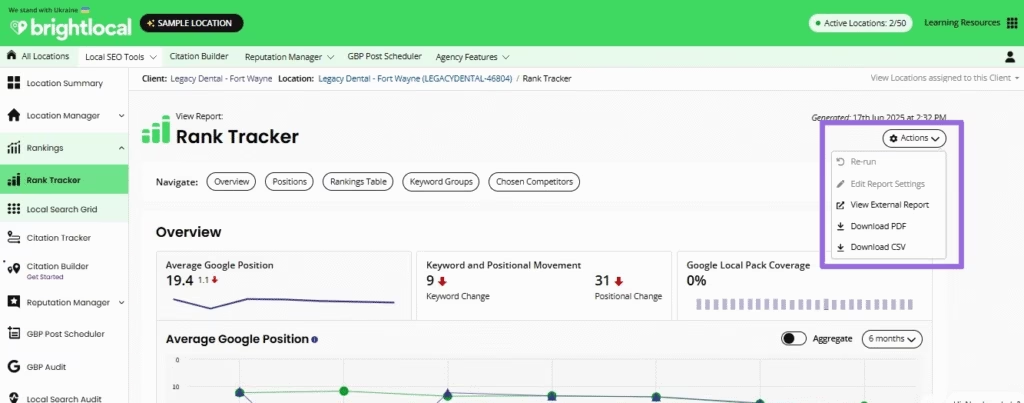
Exporting Data from the Local Search Grid
In the Brightlocal dashboard, go to Local SEO Tools > Local Search Grid.
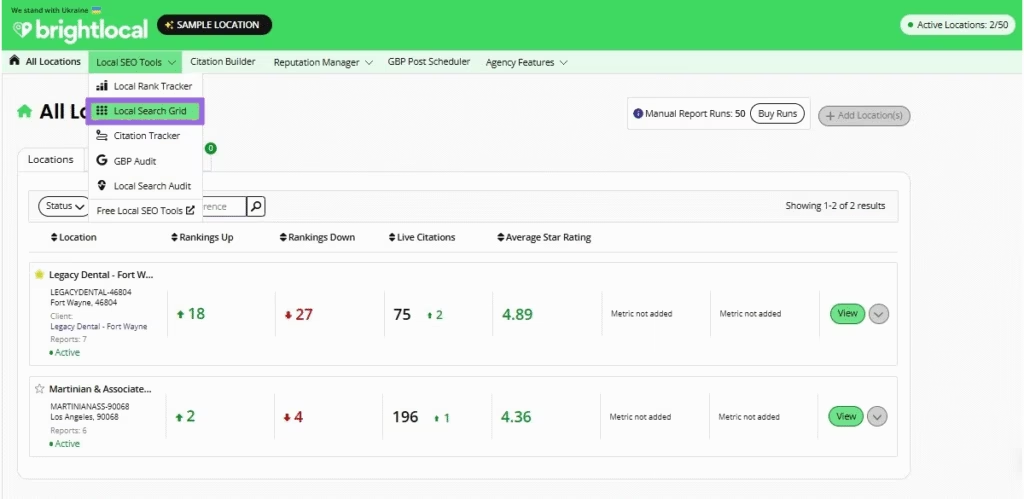
Click View on your business (e.g., “Legacy Dental – Fort Wayne”)
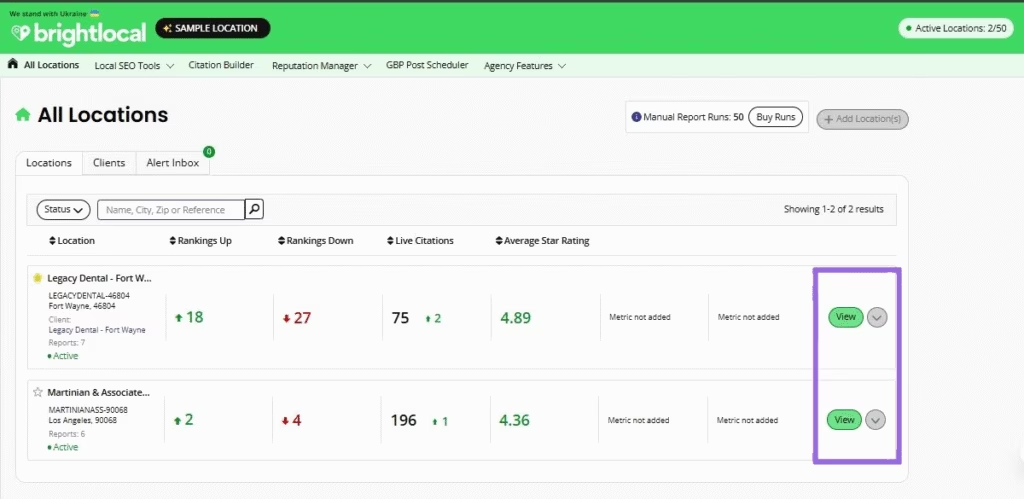
Go to Rankings > Local Search Grid.
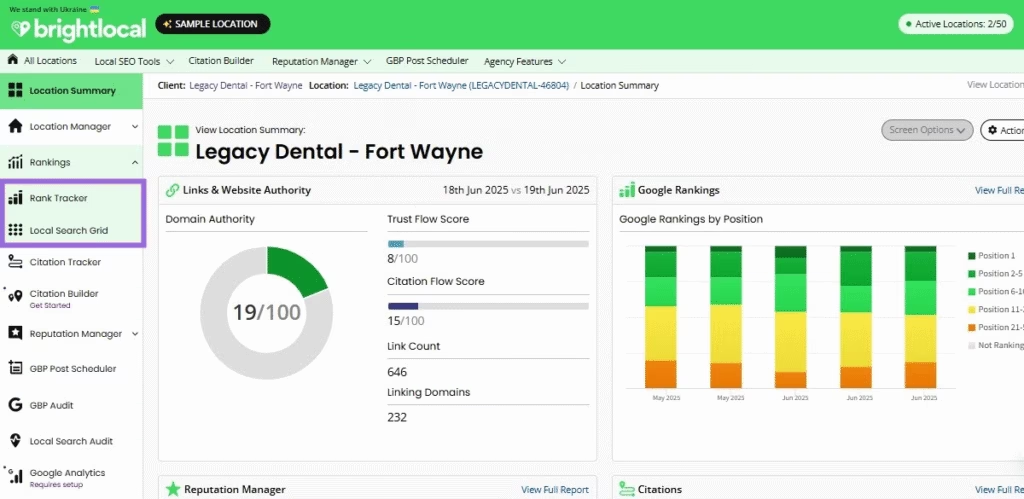
Open the generated report for your selected keyword.
Use the Select Keyword dropdown to switch between keywords if needed.
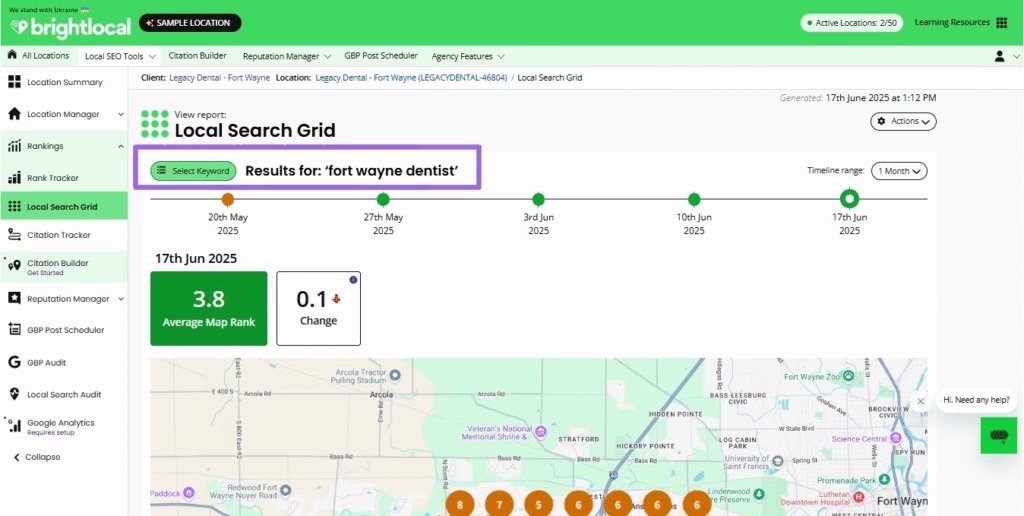
Select the Keyword for the report you want to generate.
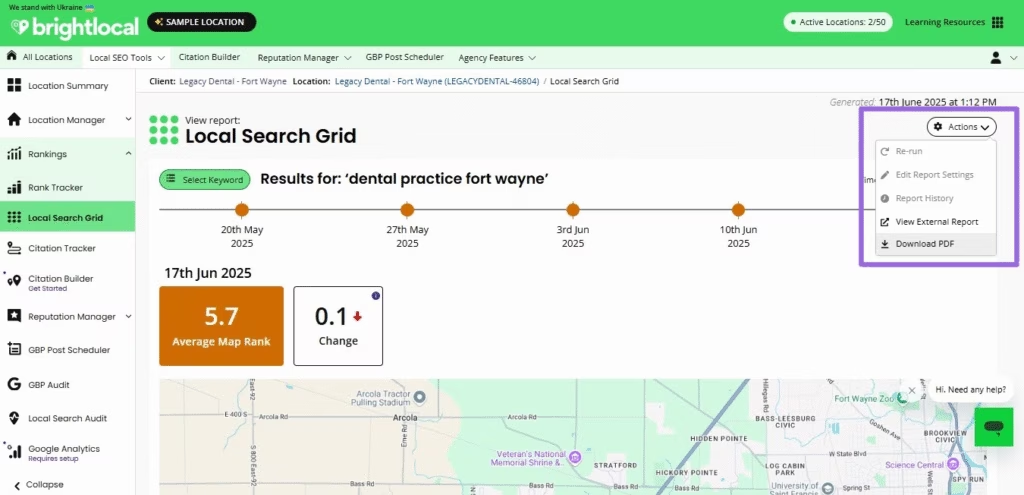
Click the Actions > Download PDF to export the grid report. (Note: CSV export is not available for Local Search Grid reports).
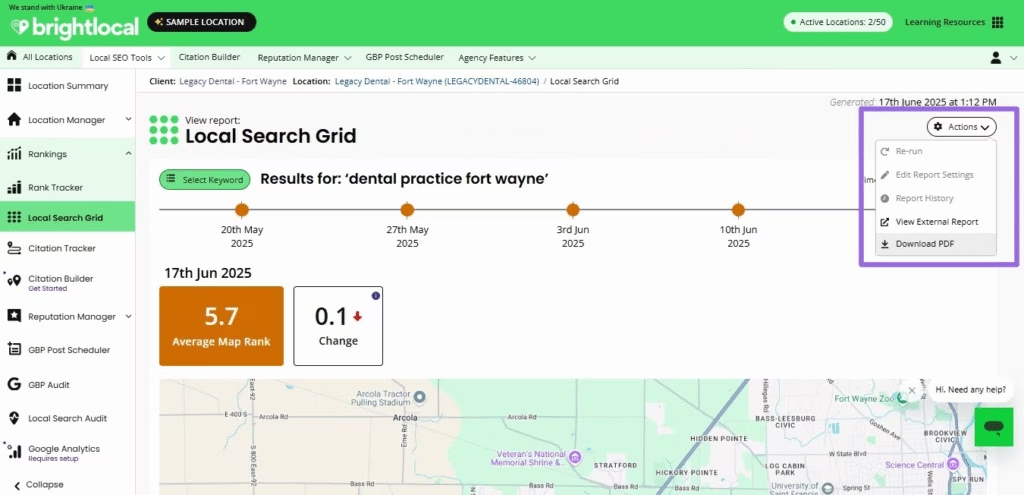
In Search Atlas
Now you will set up your project in Search Atlas, connect your Google Business Profile (GBP), and configure the heatmap using the keywords you just exported.
Go to Local SEO > Connect GBP in your Search Atlas dashboard and link your verified local business.
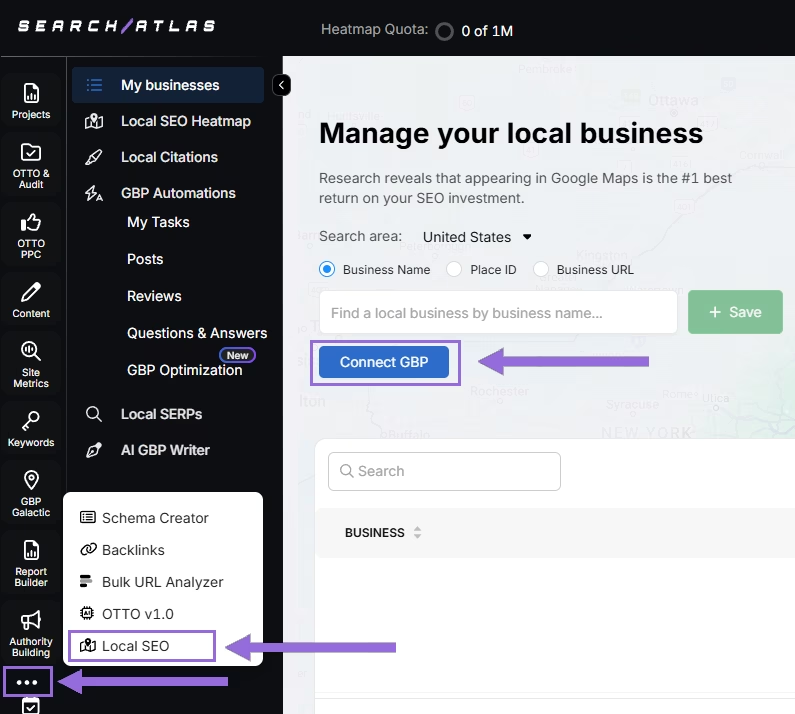
You can search for the business name exactly as it appears on your GBP, paste the Google Maps URL, or import accounts directly if you’ve already synced your GBP credentials in the main settings.
Click + Save to create the project.
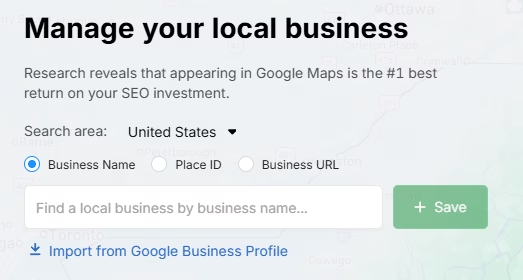
After the project is saved, go to Local SEO > Local SEO Heatmap.
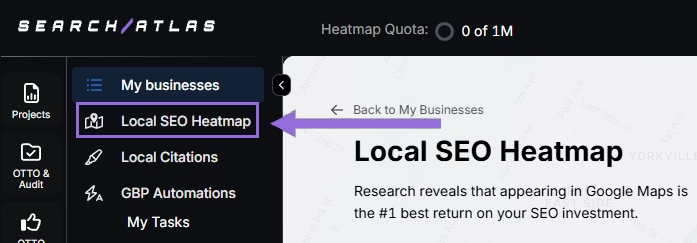
Enter the keywords from the CSV file you exported from Brightlocal’s Rank Tracker, and click on Run Local Scan.
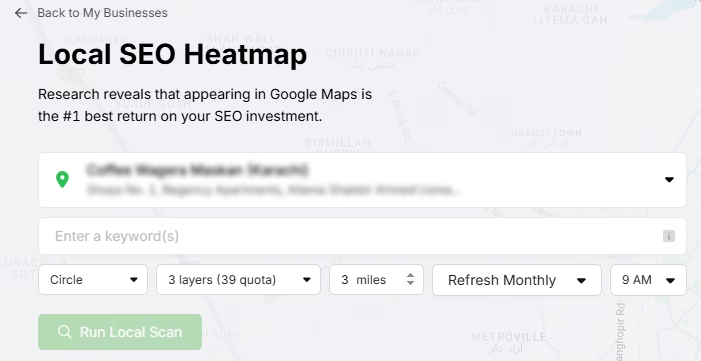
Choose between a circle or a rectangle to define the map area, then set the radius. We recommend using more layers or grids for a larger mile radius to increase tracking density.
You can also set the refresh intervals (e.g., weekly, monthly) and choose specific times when your business is open to get the most accurate performance data.
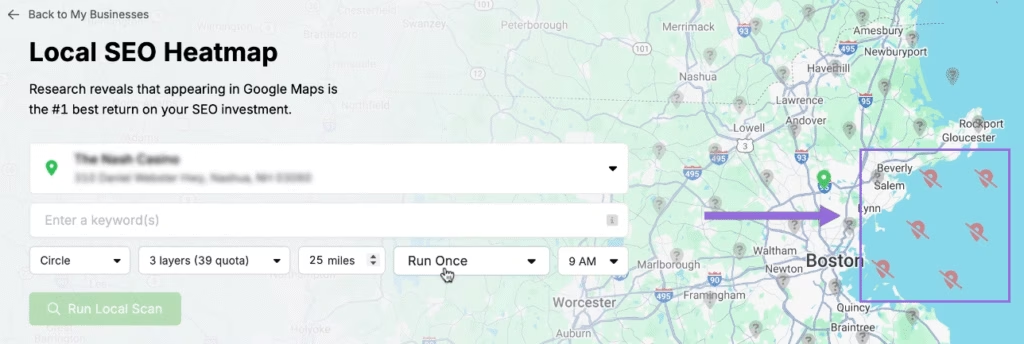
To save your quota and avoid skewed data, you can click on individual pins on the map to omit unnecessary ones from the scan (for example, pins located in parks, lakes, or uninhabited areas).
Once a scan is complete, click on any pin to see your ranking position for that specific geographic point.
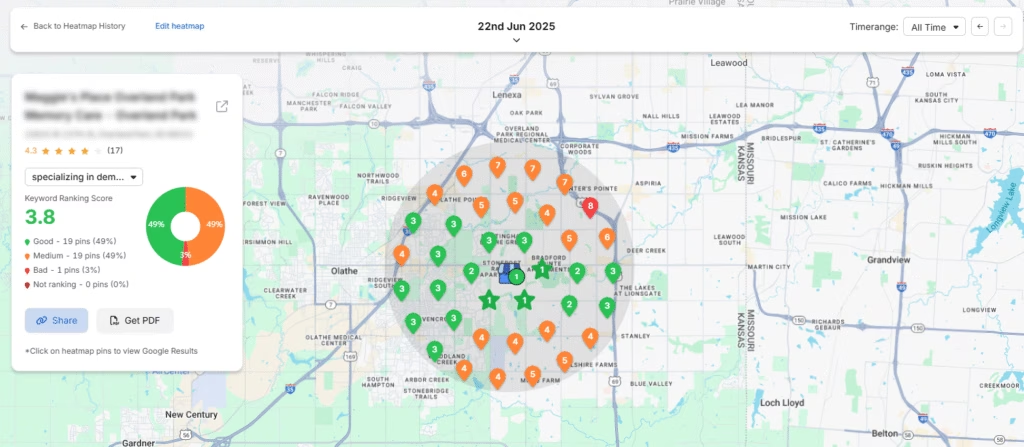
Use the Date Comparison feature to track your own ranking improvements over time.
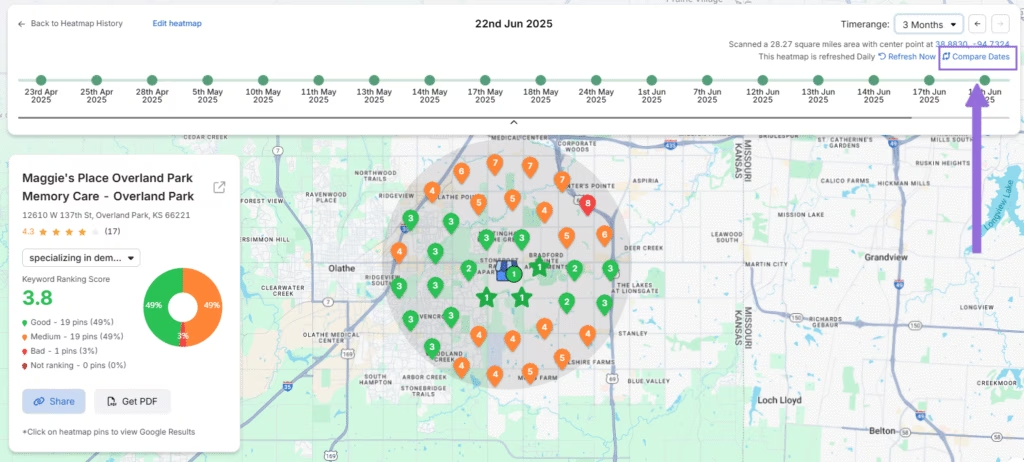
2. Automating Your GBP Management with GBP Galactic
Search Atlas GBP Galactic actively manage, post, and optimize your profile.
Go to GBP Galactic > GBP Projects to see a high-level overview of your the project’s profile, including a GBP Score (how complete your profile is), Average Rank, Citation Score, rating, reviews, posts.
Automated GBP Posts
From the main menu on the left, navigate to the GBP Galactic suite and then click on the Posts tab.
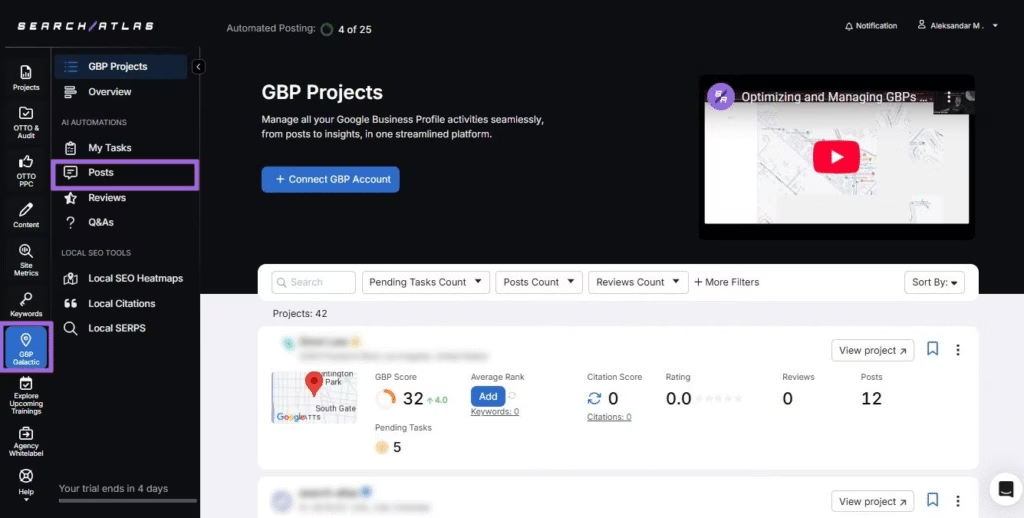
Search for the GBP or use the filters to find it.
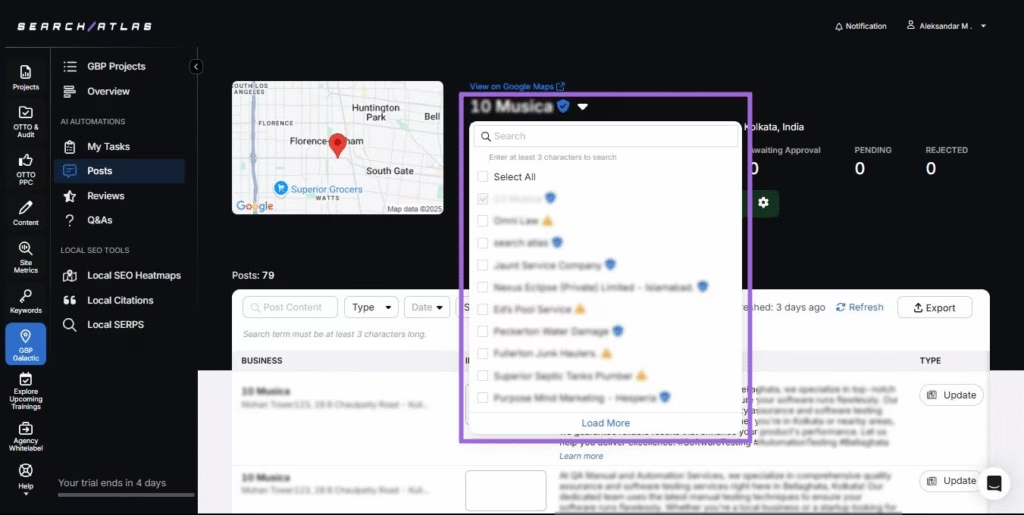
Find the Automated Posting status indicator, and click on Settings to open the configuration panel.

A settings window will appear where you can define the exact rules for the AI. You will have full control over the following options:
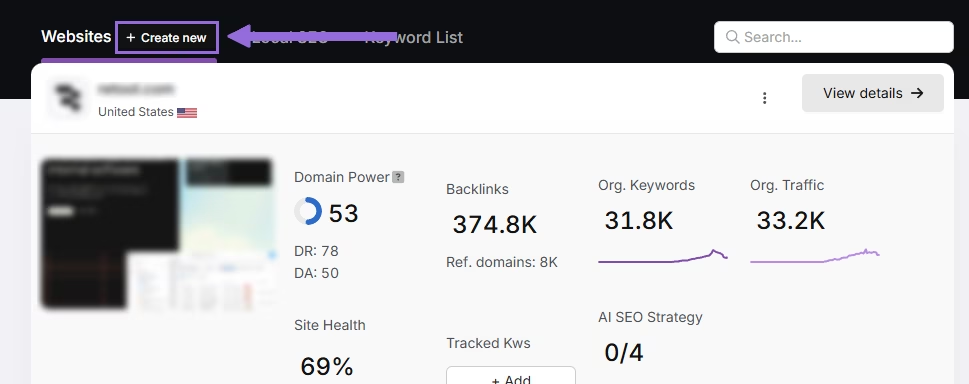
Post Frequency
Set a custom schedule (e.g., 3 times per week) or you can let OTTO analyze your business profile and determine the optimal posting frequency on its own.
Start Date
Choose the specific date when you want the automated posts to begin.
Image Source
Let GBP Galactic generate images based on your business information or use existing photos from your GB Photos.
AI Writing Tips
Provide specific instructions, brand voice guidelines, keywords, or topics for the AI to follow when it generates the post content. The more detail you provide, the better the output will be.
Approval Process
This setting gives you complete control over the workflow. You can allow posts to publish automatically without any intervention.
Alternatively, you can select the Approve Before Posting option. If you choose this, every AI-generated post will be sent to your My Tasks section for you to approve, edit, or reject before it goes live.
Publish Reviews as Posts
Enable this powerful option to automatically repurpose your positive customer reviews into engaging GBP Posts. You can add a keyword filter, so it only uses reviews that mention a specific term.
After configuring these settings, click the Update Settings button to activate the post automation for your selected business.
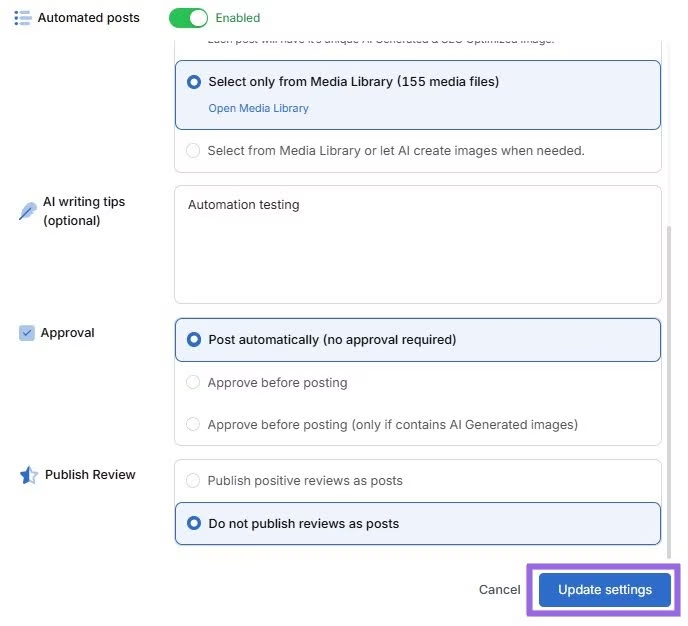
Automated Q&A Management
Go to GBP Galactic > Q&As.
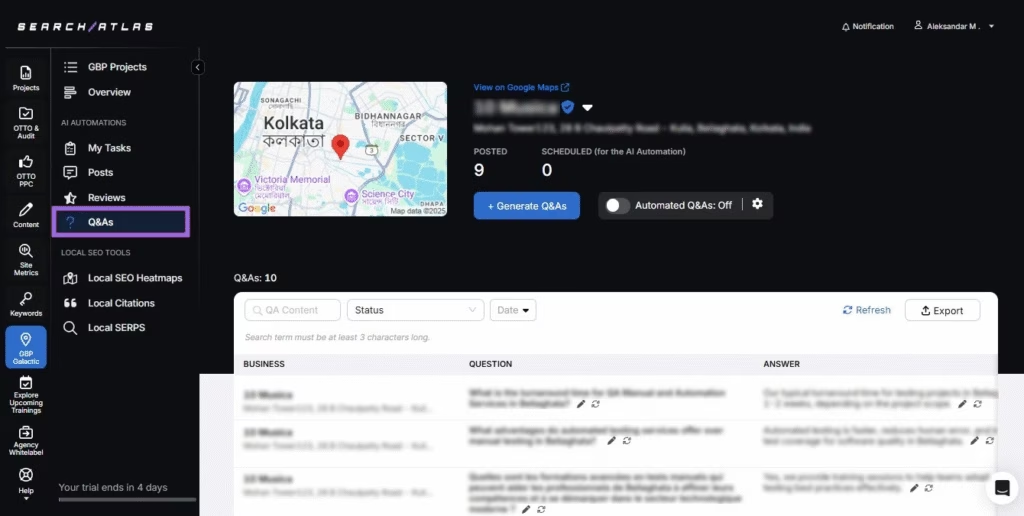
Select the GBP from the dropdown menu.
Enable the Automated Posting feature and go on to open the settings.
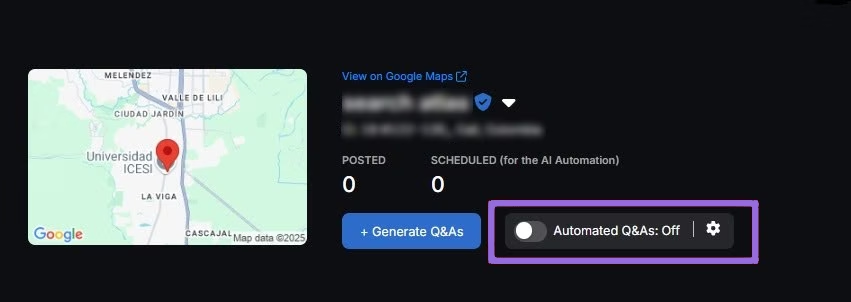
Configure the automation rules:
- Post Frequency
- Start Date
- AI writing tips
- Approval process
Click the Update Settings button to activate your custom settings.
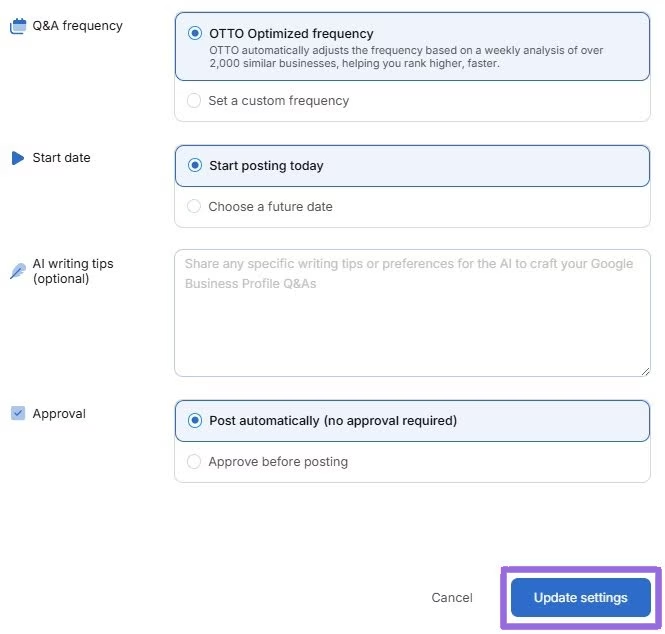
Managing and Automating Reviews
Go to GBP Galactic > Reviews.
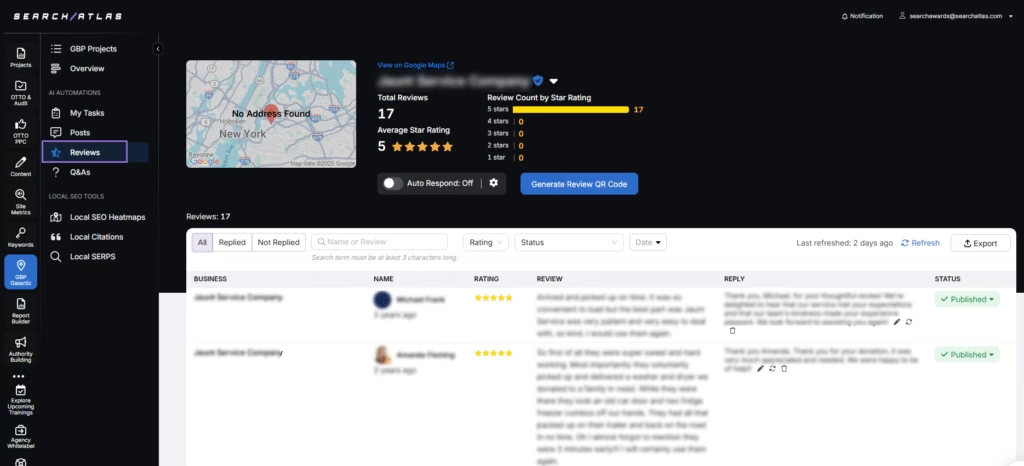
Set up the automation for responding to unanswered reviews.
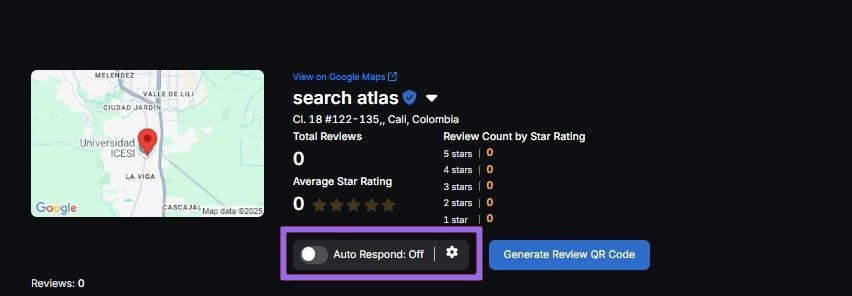
You have two main options:
- Use AI-generated replies that are context-aware.
- Create your own static templates for different star ratings (e.g., a specific reply for all 5-star reviews, and a different one for all 3-star reviews).
Define the desired tone of voice, length, and language for all AI-generated responses to ensure they align perfectly with your brand.
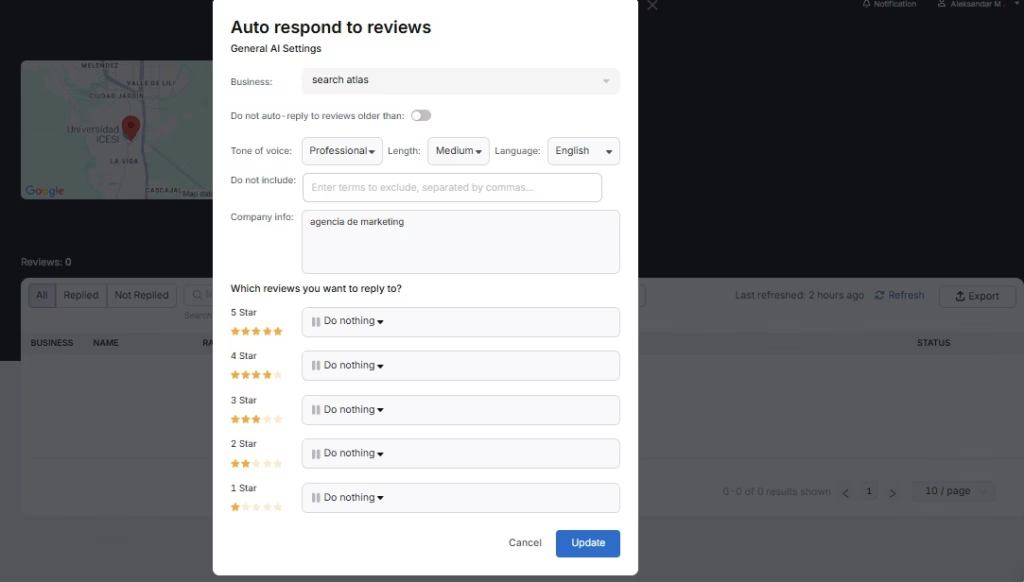
Click Update button to activate your custom settings.
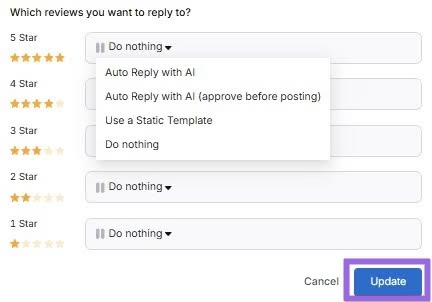
How to Request New Reviews
Go to Reviews > Generate Review QR Code to request reviews. This tool makes it as easy to get new customers’ reviews.

It generates a direct link to your GBP review form and also creates a QR code that links to the same form.
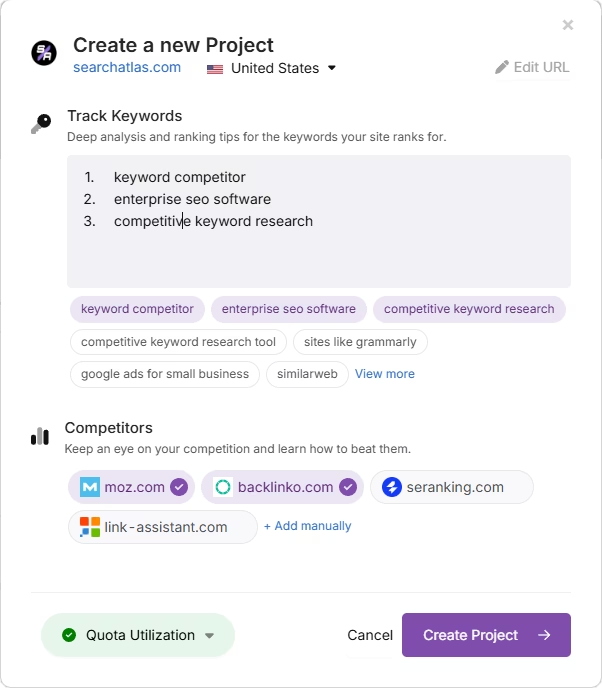
Print this QR code and place it on your business counter, on receipts, or in marketing materials to encourage customers’ feedback.
GBP Tasks Automation
Go to GBP Galactic > My Tasks to manage automated GBP Galactic tasks, including add missing social media, service descriptions, Q&As, links, categories, and more.
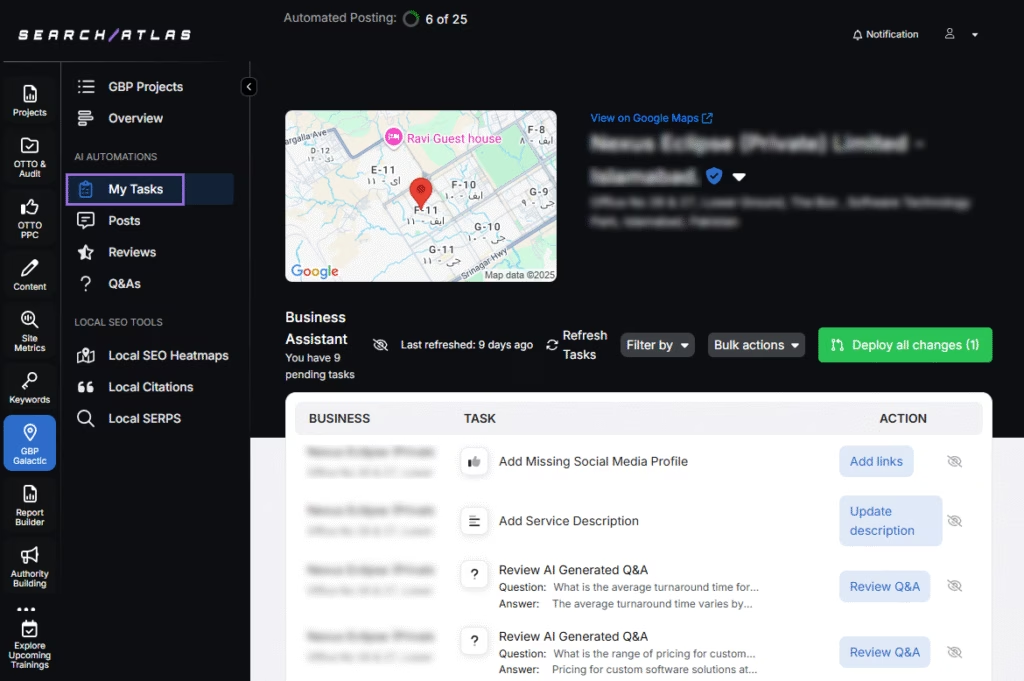
You can:
- Filter by type of task. E.g., GBP Optimization, Posts, Questions, etc.
- Deploy all changes in 1 click.
- Approve each task separately.
- Ignore tasks.
3. Setting Up Local Citation Building
Search Atlas offers a powerful tool for building local citations by submitting your business data to the five major data aggregator networks.
This is a one-time process paid for with Hyperdrive credits, not a recurring subscription.
In Search Atlas
Go to Dashboard > GBP Galactic or Local SEO > Local Citations
Select the desired business name from the dropdown menu. Ensure the correct Google Business Profile is linked.
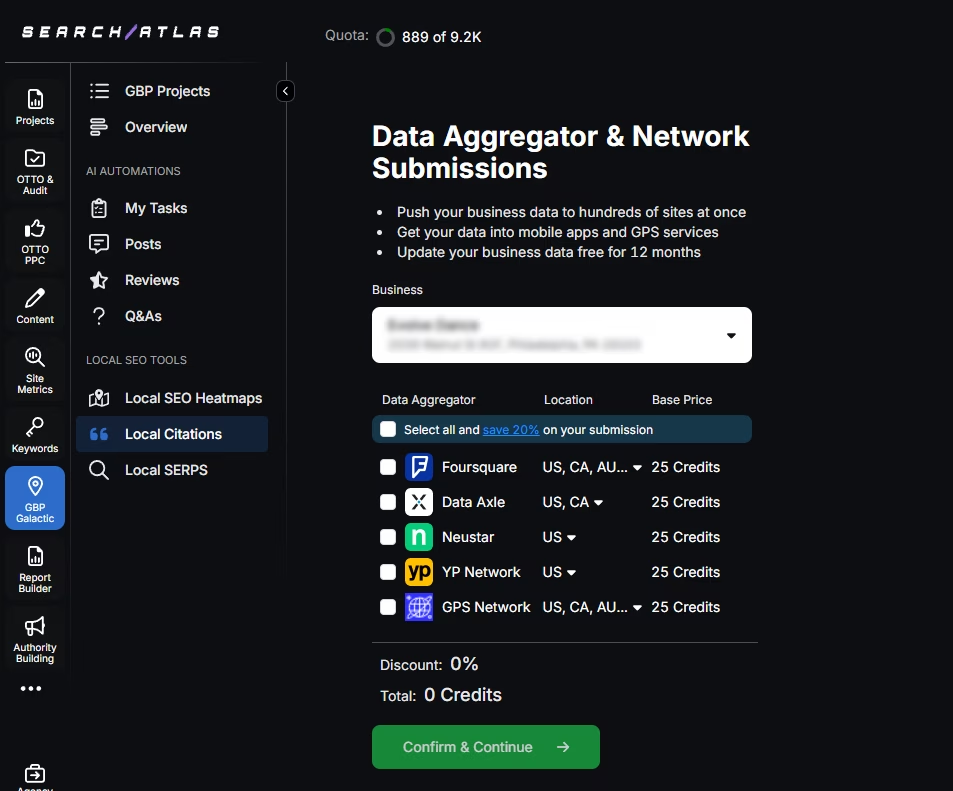
Choose the Data Aggregator Network(s) you want to submit to. The options are Data Axle, Foursquare, Neustar Localeze, Yellow Pages Network, and GPS Network.
Click the three dots to review the pre-filled business details and provide any additional details required.

Click Submit to finalize the process.
The data will begin to appear on the Citation Listing screen.
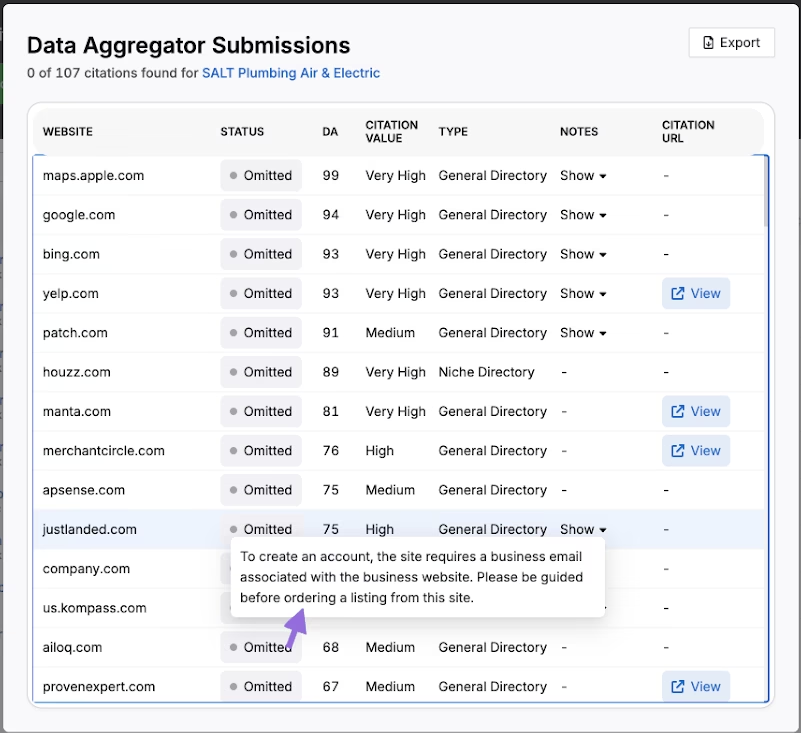
Post-Submission
The process spans approximately 40–45 days, depending on the aggregators. You can update submitted details later for free if needed.
A complete report with live and updated citations will be available after four weeks.
4. Setting Up White-Label Reports
Search Atlas provides a fully customizable, white-labeled platform for your agency.
This includes client-specific reports, branded dashboards, and advanced tools for managing your services and customer interactions.
From Brightlocal
Log into your Brightlocal account and download any final PDF reports you wish to keep for historical comparison before making the switch.
In Search Atlas
Go to Dashboard > Agency Whitelabel.
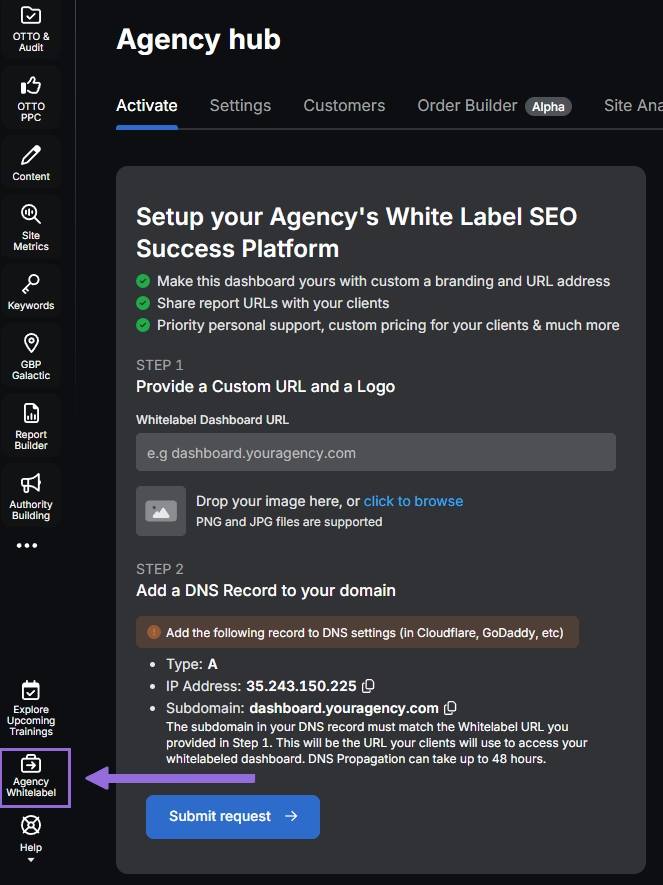
Click on the Settings tab to configure your brand’s appearance.
Upload Your Assets: Add your Agency Logo, Sign-in Logo, Sign-up Logo, and Favicon.
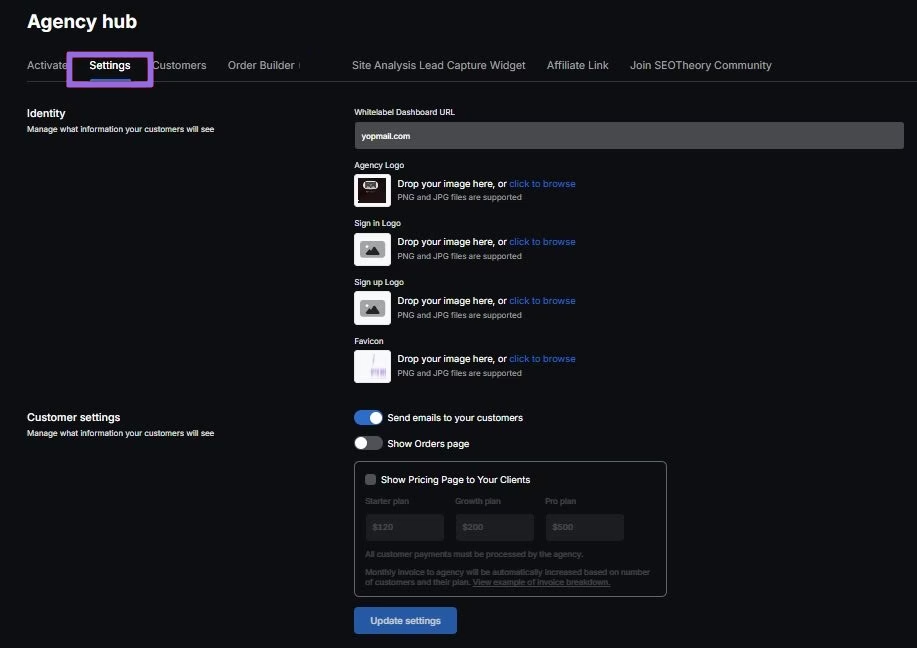
Use the Customers tab to add your client accounts, assign specific plans to them, and manage their access permissions.
Once these settings are saved, the entire platform is white-labeled.
Any report you share via a link or iframe will use your custom URL and feature your logo, which ensures a fully branded experience.
5. How to Leverage the Search Atlas Onboarding Process?
Search Atlas offers multiple support channels to help you with any questions or issues. Here is how to make the most of our onboarding process.
Watch Tutorial Videos
Search Atlas offers step-by-step tutorials on YouTube to help you set up reports, dashboards, and automations.
Book a 1:1 Onboarding Session
During your trial, you can schedule a 1:1 onboarding session directly from the dashboard. A product expert will help you customize your setup, connect integrations, and configure OTTO SEO for automation.
Follow the 7-Day Email Campaign
As soon as you start your free trial, you’ll receive a 7-day onboarding email sequence. Each email walks you through a core feature.
Technical Documentation
Access full technical docs via the Help Center for detailed instructions on using every tool. Everything is searchable and regularly updated.


